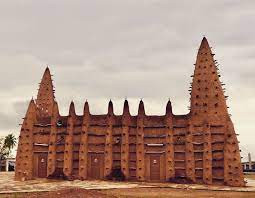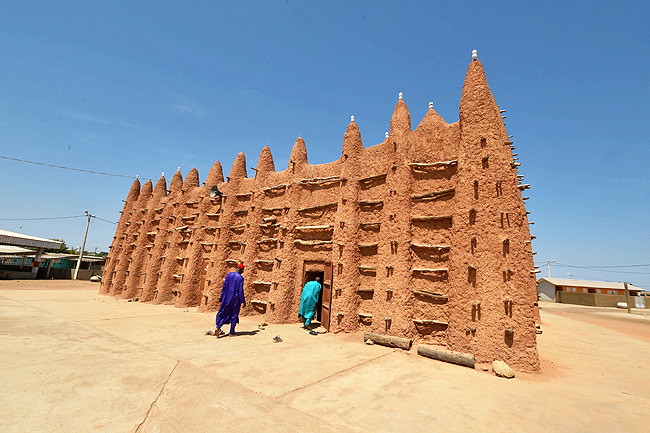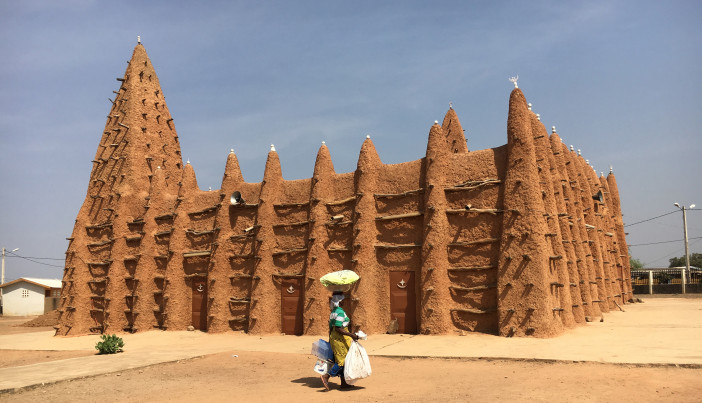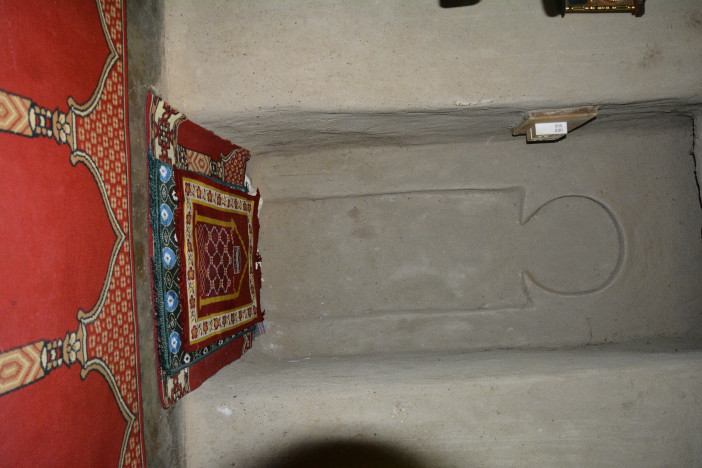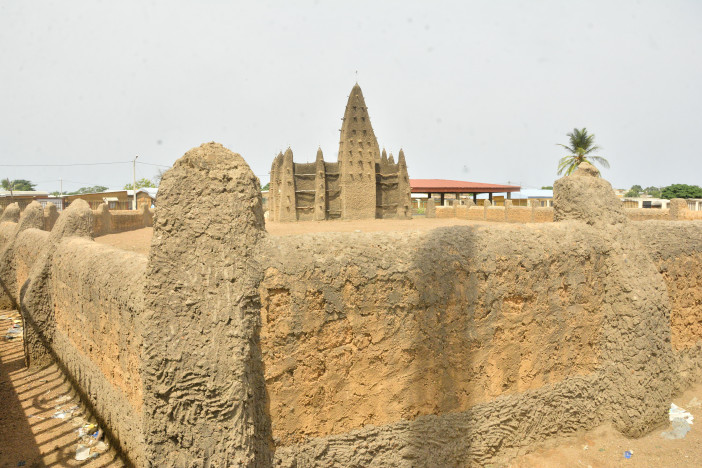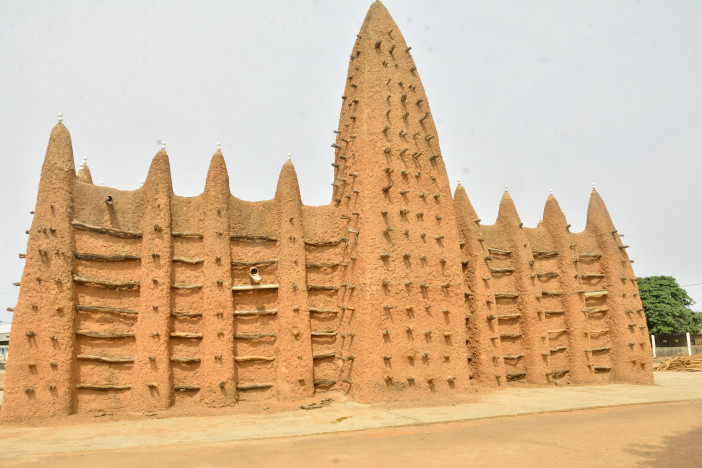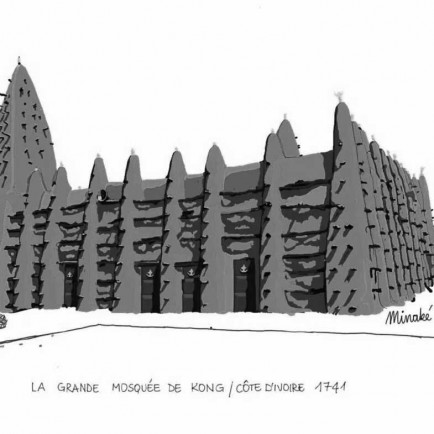The Grand Mosque of Kong (Missiriba)
History
The mosque of Kong, of neo-Sudanese style constitutes the oldest symbol of the Islamization of the people of the North of the Ivory Coast. It has retained its function as a place of prayer and gathering.
Around 1897, Samory Touré burned the Grand Mosque to keep it out of the hands of the French; the mosque eventually underwent reconstruction and served as a symbol of his resistance to colonialism.
Its architecture, which has remained intact for a long time due to regular maintenance, has however undergone, in 1978, an inappropriate restoration that has somewhat destructured the building.
Urban and Architectural
The Kong Mosque, also known as the Grand Mosque of Kong, or Missiriba, is the earliest sign of the Islamization of the inhabitants of the Northern Ivory Coast. It was constructed in neo-Sudanese style using mud and logs, and it continues to serve as a place of worship and gathering until now.
Although the precise year of foundation is unknown, certain texts indicate that Kong had multiple mosques, including the Grand Mosque, by the year 1741.
The major central room in Sudanese mosques is a prayer hall, to which is added the mihrab, which is situated in the minaret tower and faces Mecca.
Men pray to the East and women to the West in most prayer rooms, which are typically rectangular or square in shape. Women also have a separate private entrance from men.
The facades of mosques, which are typically blind, are distinguished by the presence of buttresses and minarets, and from the walls sprout the supporting woods that form a sort of curious decoration. The mosques were constructed using mud bricks, which were created by mixing the earth with small pebbles.
Description
The building is made from mud brick techniques consolidated with strands offering a compact architectural uniqueness adapted to the relatively rainy climate of the region.
The interior, which is extremely chilly compared to the heat outside and has four low apertures, is accessible. The floor is covered with fine sand and rugs for prayer.
A decree of April 20, 1988 classifies the mosque as a historical monument. It was also declared a UNESCO World Heritage Site in 2021.
References
https://whc.unesco.org/en/list/1648/multiple=1&unique_number=2391
https://fr.wikipedia.org/wiki/Mosqu%C3%A9e_de_Kong
https://baab.ci/articles_baab/la-grande-mosquee-de-kong/
Details
Location
49XR+M67 Mosquée de Kong, Kong, Côte d’Ivoire
Worshippers
200
Architect Name
Year of Build
1741
Area
400
Drawings
Map
History
The mosque of Kong, of neo-Sudanese style constitutes the oldest symbol of the Islamization of the people of the North of the Ivory Coast. It has retained its function as a place of prayer and gathering.
Around 1897, Samory Touré burned the Grand Mosque to keep it out of the hands of the French; the mosque eventually underwent reconstruction and served as a symbol of his resistance to colonialism.
Its architecture, which has remained intact for a long time due to regular maintenance, has however undergone, in 1978, an inappropriate restoration that has somewhat destructured the building.
Urban and Architectural
The Kong Mosque, also known as the Grand Mosque of Kong, or Missiriba, is the earliest sign of the Islamization of the inhabitants of the Northern Ivory Coast. It was constructed in neo-Sudanese style using mud and logs, and it continues to serve as a place of worship and gathering until now.
Although the precise year of foundation is unknown, certain texts indicate that Kong had multiple mosques, including the Grand Mosque, by the year 1741.
The major central room in Sudanese mosques is a prayer hall, to which is added the mihrab, which is situated in the minaret tower and faces Mecca.
Men pray to the East and women to the West in most prayer rooms, which are typically rectangular or square in shape. Women also have a separate private entrance from men.
The facades of mosques, which are typically blind, are distinguished by the presence of buttresses and minarets, and from the walls sprout the supporting woods that form a sort of curious decoration. The mosques were constructed using mud bricks, which were created by mixing the earth with small pebbles.
Description
The building is made from mud brick techniques consolidated with strands offering a compact architectural uniqueness adapted to the relatively rainy climate of the region.
The interior, which is extremely chilly compared to the heat outside and has four low apertures, is accessible. The floor is covered with fine sand and rugs for prayer.
A decree of April 20, 1988 classifies the mosque as a historical monument. It was also declared a UNESCO World Heritage Site in 2021.


